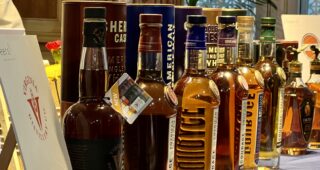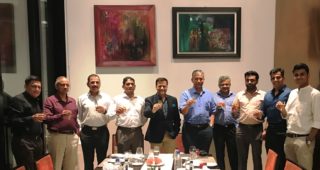When legends steer an engagement, anticipation is bound to be high. It was no different when Jim Murray arrived in India to take people through the rudimentary of whisky tasting. For most people reading this blog, Jim Murray needs no introduction. The Whisky Guru and a de facto authority on whisk(e)y writes the annual Jim Murray’s Whisky Bible read the world over with unparalleled enthusiasm among whisky lovers . The Guide, which is now in its 16th edition, contains tasting details of more than 4700 whiskies of the world including over 1900 Scottish Single Malts, 380 Blended Scotches and 750 American Whiskies.
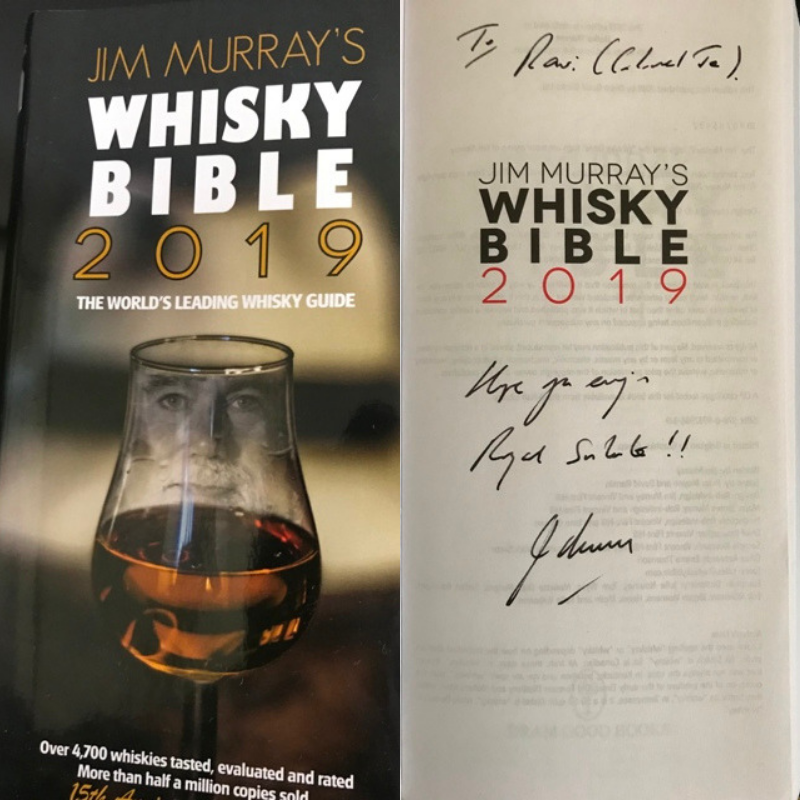
For Indians, The Whisky Bible shot into prominence when the country’s home grown Single Malt Amrut Fusion made it to the hallowed annals-being adjudged the Third Finest Whisky in the World in the publication’s 2010 edition. This remarkable win worked as an official coming of Indian Single Malts on the global scene. Ever since, quality Indian whiskies have gained an international acceptance like never before.
A Class Apart
As part of his four days itinerary in India during May 2019, Jim Murray conducted a series of blind tastings in Delhi and Mumbai. Murray’s tour was organized by the Mumbai based All Things Nice – a luxury, wine and spirits consulting & marketing agency headed by Sommelier Nikhil Agarwal. I found my place at the Delhi session courtesy good friend Prarrthona Pal Chowdhary, an accomplished person from the alcobev industry, now working in the luxury tea domain.

Arriving at hotel Pullman in New Delhi Aerocity, we were welcomed around a tastefully laid out spread of charcuterie, anti pasti, a wide range of hors d’œuvres and whisky pours, before Jim Murray joined the gathering. Soon after, we were ushered into a well appointed tasting area organized by group seating and the necessary whisky tasting wherewithal. Food, in Jim Murray’s tastings is discreetly kept at a sufficient distance so as to not interfere with whisky appreciation.
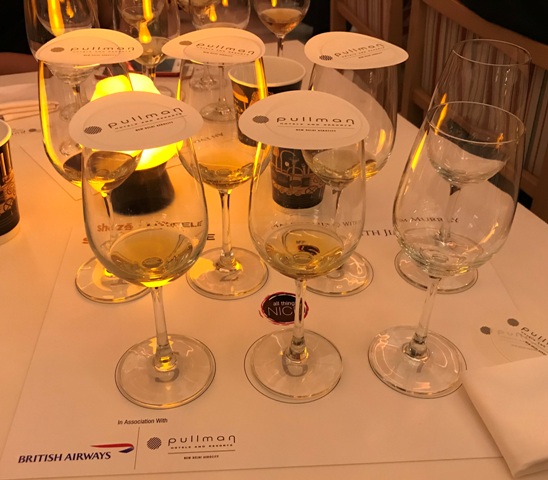
Murray has a stringent set of ground rules that make the orientation of his tastings crystal clear from the outset. A detailed set of rules is also listed on the Whisky Bible website. Murray himself initiates his audience with some of these, albeit in a humorous way. Some of these rules are: no drunkenness while approaching the tasting, no private conversations, no pre emptive tastings- and most logically- keeping the mobile phones silent. So particular is Murray about these rules that he doesn’t mind repeating them quickly all over again for late comers. The ground rules work well to get a diverse set of people on a common platform before the tasting commences. The ensuing conduct is “fluid as the golden drams”, to say the least.
Major takeaways from Jim Murray’s whisky session
Tasting a good range of whiskies would be an obvious takeaway of an engagement of this stature. But indulgence is invariably secondary on the minds of enthusiasts when the focus remains on learning. Here are some major takeaways for me from Jim Murray’s whisky tasting class:
Whisky Vs Wine tasting
Appreciating whisky vis-à-vis wine is a different ball game. As we started swirling and nosing the first of the whiskies like we do with wine, Murray was quick to point out the anomaly elaborating that whisky, with its higher alcoholic content, is not to be swirled as it would only accentuate the perception of alcohol on the nose. The correct way is to cup the glass in your hands to warm the liquid a little so that it can exude the aromas. For similar reason, the nose too should not be buried inside the glass as we do in the case of wine while appreciating the aromas.

Ice is not Nice
Adding ice to whisky is a strict no-no during a systematic tasting. One, it dilutes the whisky, and two, it prevents the aromas from evolving. You couldn’t be warming and cooling the whisky at the same time, could you?
No watering down
A popular practice is to dilute a whisky sample with a few drops of water after the initial nosing and tasting. Murray advices against this practice with the “purity of expression” logic. Many would differ with this premise going by the other school of thought that adding a little water, breaks down the ester chains in the whisky for a better expression. However the Murray methodology advocates limiting the use of water during a whisky tasting to clean one’s palate or refreshing the glasses if need be. Personally speaking, both the approaches work well for me- but then I’m not an author of a cult publication!
Whisky blooms best in “Tulip” glasses
This is another departure in the Murray methodology which recommends “tulip” style stemmed glassware rather than the squat Riedel, Glencairn or similar glasses used by many for whisky tasting. And yes, any other material than glass is strictly forbidden. According to Murray, an ample room and a tapered shape funnels the whisky’s aromas towards the mouth of the glass like none else.
Close to the heart
Clasping and closing the goblet close to the heart while the aromas of the whisky get entrapped within the space is another tenet of the Murray methodology. The warmth from all around ensures adequate release of aromas and closing the mouth of the glass traps these aromas before they are released to the nose. This technique worked wonders to the expression of all the whiskies that we tasted.
Taste, don’t drink like a Fish
Quite humorously, Murray highlighted his fish like batting of lips while looking high up towards the ceiling. The rapid lip movement is to ensure a proper spread of whisky with the imbibed air in the mouth. As for looking high up- well, Murray said that it was just to prevent the whisky from spilling onto his necktie!
The Selection
Jim Murray is known to arrange the whiskies for his sessions himself unless there is a specific arrangement to the contrary. The tasting repertoire in Delhi was :
-
Jack Daniel’s Gentleman Jack
-
Dewar’s 18 YO
-
Ballantine’s 17 YO
-
Aberlour 12 YO
-
GlenGrant 18 YO
-
Paul John Bold
-
Glenmorangie The Original
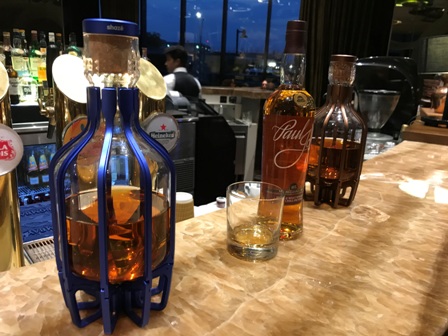
The USPs of each of the whiskies, all tasted blind, became well embossed during the interactive session. Among the best liked were Paul John Bold, one of India’s shining Single Malts that has been awarded as “Liquid Gold” in the Whisky Bible and Glen Grant 18 YO, a consistent winner since the last four editions of the Whisky Bible, also adjudged the Second Finest Whisky in the World in the latest (2019) edition. Interestingly, Paul John Bold was perceived as an Islay Malt courtesy its strong peated character by a large number of people (including me) at the blind tasting.
Freezing the Moment
Copies of the latest edition of Jim Murray’s Whisky Bible were up for sale (Rs. 1500) after the tasting session with the precious opportunity to get them autographed by the Legend. I got mine too (see image at the start of this article) taking home memories to be cherished for times to come with a lingering taste of whisky.






